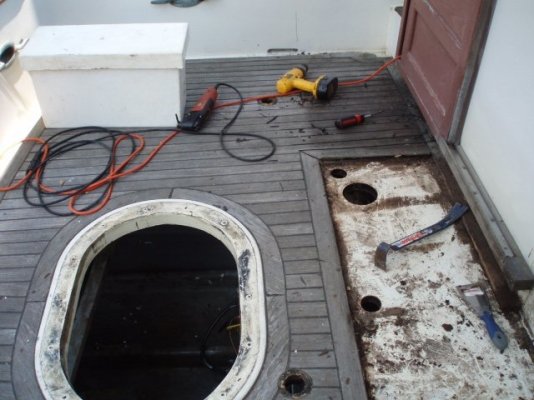MurrayM
Guru
Our aft deck needs to be replaced because of unattended leaks at the deck fills.
There will be a permanent rain cover/bimini over the aft deck, so I was thinking it would be possible to fill the tanks by reaching into the open lazarette hatch and doing away with deck fills altogether. The fill pipes are fairly accessible without having to over reach or crawl into the lazarette.
Sound doable? Any rules or regulations against this? Any other options out there?
There will be a permanent rain cover/bimini over the aft deck, so I was thinking it would be possible to fill the tanks by reaching into the open lazarette hatch and doing away with deck fills altogether. The fill pipes are fairly accessible without having to over reach or crawl into the lazarette.
Sound doable? Any rules or regulations against this? Any other options out there?


